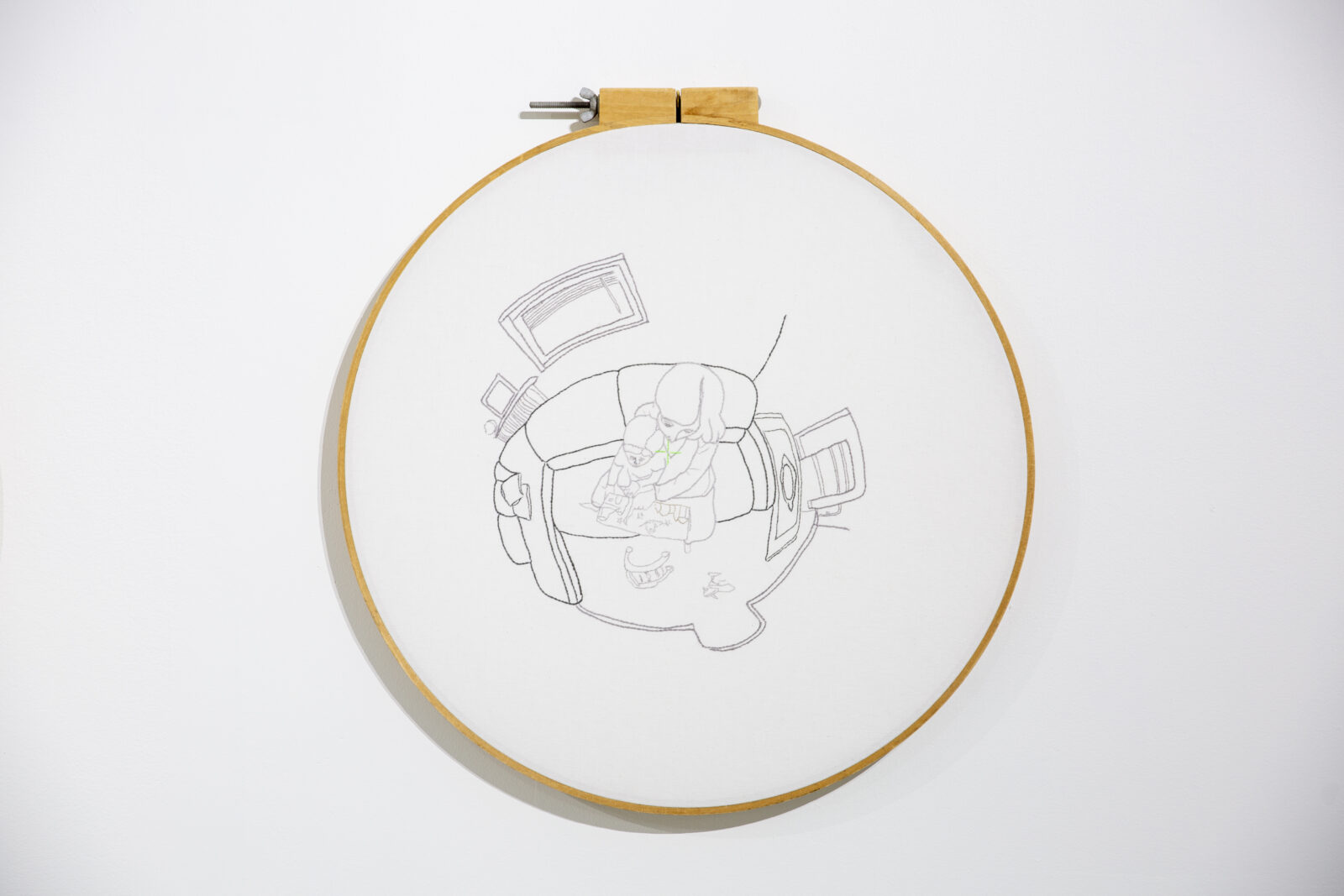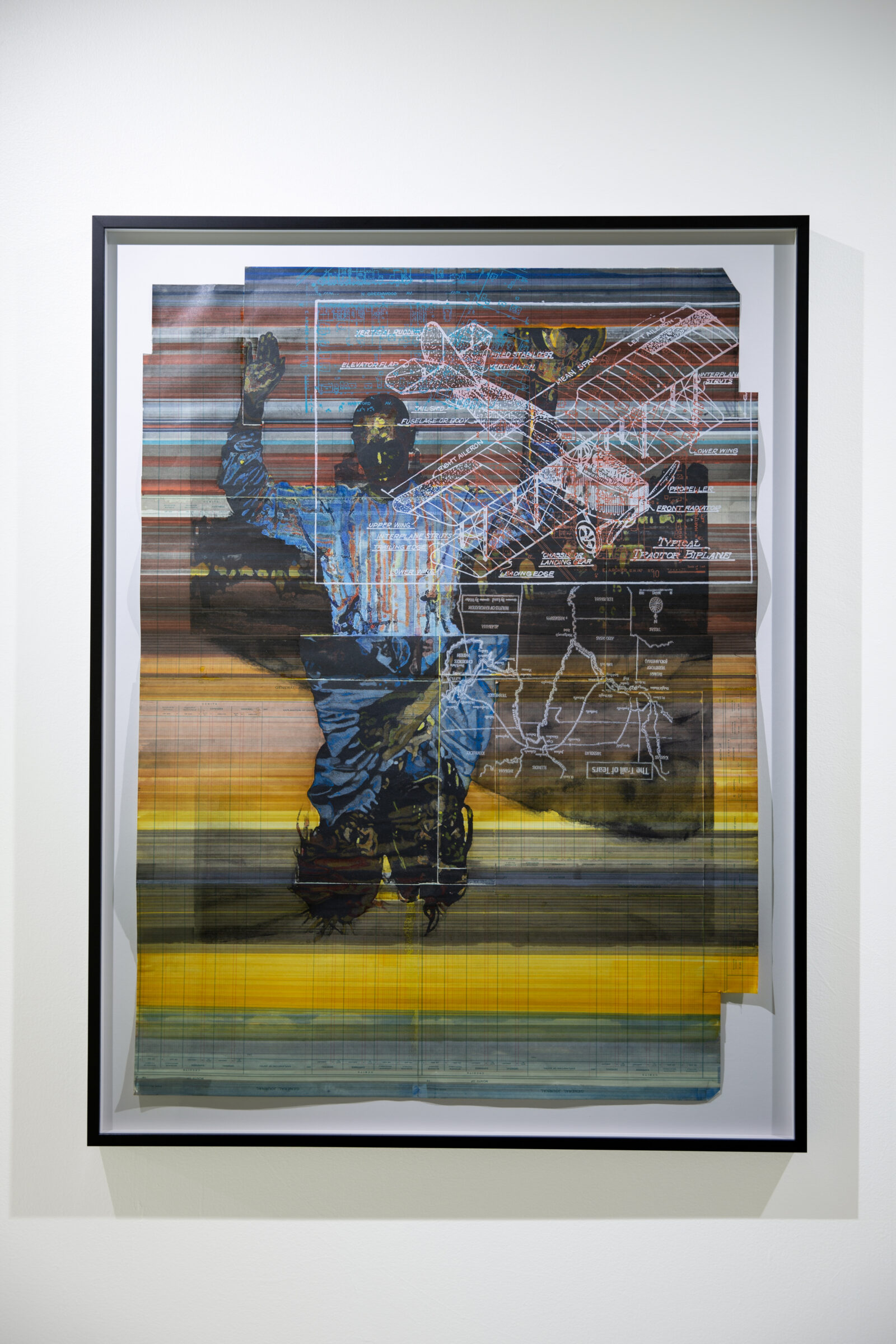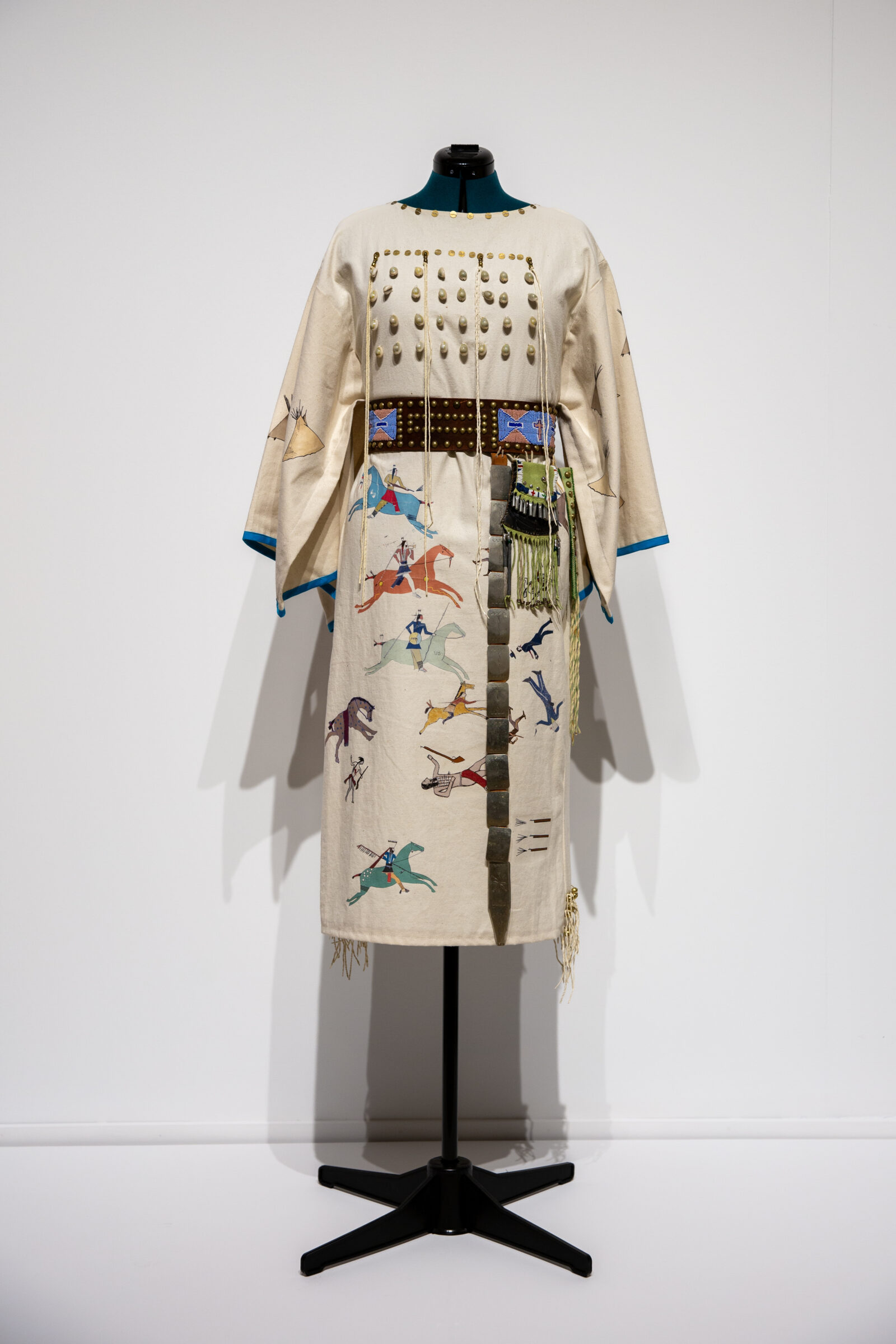
The past decade has seen a significant shift in the presentation of art that emerges as part of, rather than bearing witness to, social movements. Artists, activists, curators, scholars, and stakeholder communities have increasingly worked together to craft a new exhibition format that owes much to long histories of organizing, protesting, and constructing spaces of solidarity.1 Its lineaments have emerged alongside attempts by more mainstream artworld institutions—primarily museums, galleries, and blue-chip artists themselves—to strategically appropriate the critical force and tactics of movement-based cultural initiatives. Little surprise here. But because the new format is both operating in the contexts of movements and circulating as a lucrative set of formal expectations, it signals a pressing need to recalibrate our expectations of institutionality itself. Most urgently, it rescales a tired consensus about what art can or cannot do in the face of supermassive structures of manmade catastrophe. I want to open this review of an ambitious project of anti-militarist critique by laying out some of the new format’s key features.
Comprising a series of networked sites and platforms, exhibitions that partake in this form often include performances, small-scale publications, political actions and conversations, usually housed in a range of institutions that might or might not customarily show advanced art. They bring people with strong artworld investments together with those who work elsewhere, the institutionally secure mixing with the institutionally precarious. Although invested in forms of institutional critique, the format typically trains its gaze on objects outside the art world (government agencies, toxic corporations, militaries, regimes of capital) rather than museums or markets or foundations, implicitly enacting its dissatisfaction with the latter by forging alternative modes of engagement and display. Projects tend to proliferate, unfolding long after the work leaves any one venue. These projects ask the establishments that house them to redirect their priorities away from their own ideological and material reproduction, hence the prominence of mixed-use sites like community centers, libraries, and university art galleries less attached to ideas of quality, neutrality, prestige, or, of course, “art.”
As far as the contemporary art scene goes, this might sound like old news. But there’s an important difference between the format I’m describing and the familiar parade of participatory, relational, and supposedly decentered shows that might well take identities or politics as their subject. Since each instance is designed around a specific issue, usually radical, addressing problems of trust, collaboration, and communication is a crucial part of the exhibition’s infrastructure. “Care” is a vexed concept of the moment (no thanks to museum professionals who, around 2020, rediscovered en masse the Latin curo at the root of “curator”) but a commitment of longstanding, nonephemeral care for artists, audiences, allies, works, and relations just is what distinguishes the format.2 Special trust is placed in those who organize each show, trust that they handle respectfully issues that are implicated directly—not symbolically or symptomatically—in mass death (STLW, 296).
Surviving the Long Wars exemplifies the new format at its best. Beginning life as a virtual seminar series in 2022, it then took shape across three very different exhibition venues (the Chicago Cultural Center, Hyde Park Art Center, and the Newberry Library) as the second Veteran Art Triennial and Summit in 2023.3 Gathering a vast array of different cultural forms from the nineteenth century to the present, the project’s core ambitions are threefold: 1) to situate the post-9/11 “Global War on Terror” within an unbroken genealogy of terrorist counterinsurgency that has extended from the “Indian wars” to the present day; 2) to propose a new paradigm for understanding the creative practices of veterans of these “long wars” by placing them in dialogue with the creative practices of people registering and resisting the profound impacts of U.S. empire; 3) to construct an institutional microcosm in which art’s capacity to expose violence and initiate its undoing can actually be modeled, rather than simply affirmed or inspected.4 Edited by a collective of five artists, scholars, and activists, two of whom are U.S. Army veterans, the book under review is less a catalog proper than a deposit towards the realization of these ambitions.5

The book charts a story running from Frederick Gokliz’s (San Carlos Apache) brightly rendered drawings, made while he was both imprisoned by and enlisted in the U.S. Army, to Bassim Al Shaker’s haunting skyscapes that recall the exquisite, painful aftermath of explosions in Iraq (fig. 1), to Yvette Pino’s elaborate silkscreens about the martial mythography of her own service unit, the 101st Airborne Division. It persuasively demonstrates that war weaves together different textures of violence. The continuous Euro-American assault on western Asia, itself a testing ground for technologies now turned against domestic populations in North America (fig. 2), turns out to depend on the long history of Native repression for its symbolic resources (think “Operation Geronimo”) and force protection (STLW, 124-5).

Many artists draw formal connections between the struggles united by slow catastrophe. People previously kept apart by capital or top-down initiatives of race-making recognize their shared vulnerabilities to disaster and rediscover shared histories of struggle. Rodney Ewing’s Come the Mean Times sutures the upper body of a Black man with hands raised to two inverted Native figures (fig. 3). Visually linking the Trail of Tears, a genocidal episode of land theft, to the Tulsa Massacre, a murderous policing of racial difference, Ewing makes one the mirror of the other. The work is rendered on a material substrate of ledger paper, evoking the medium that incarcerated Native artists—like Gokliz—used in the nineteenth century. The curators give these decisions some historical heft by reproducing a spread of archival finds from the Newberry Library’s collections, showing how radical periodicals such as The Black Panther, Akwesasne Notes, and Winter Soldier circulated the same images of events in the early seventies like the occupation of Wounded Knee. Ewing’s work suggests an artful counterpart in the present to the “unlikely coalitions” of the past (STLW, 48).6

A key point made throughout Surviving the Long Wars is that it’s often tough to disentangle the perpetrators and victims of harm caused by U.S. empire. Veterans are often both at once. Miridith Campbell (Kiowa) served in the U.S. Marines, Army, and Navy. Her striking battle dress features ledger-style drawings depicting the 1864 defeat of Kit Carson by Kiowa warriors, doomed soldiers tumbling down the wearer’s body (fig. 4). And Melissa Doud (Ojibwe)’s Bullet Dress turns a military uniform into a jingle dress adorned with spent casings and twenty years’ worth of service patches earned by the artist (fig. 5). Deconstructing uniforms into traditional garments, Campbell and Doud expose the martial logics that press Native histories and lives into the service of violence against other “host nationals” (STLW, 70-1).


Rijin Sahakian asks: “will the art world, informed by and participating with war’s image-making and financial structures ever take the risk of remaking the rules of engagement?” (STLW, 134).7 U.S. exhibitions about art and war have tended to trace the impact of war on art made by professional artists, as Melissa Ho puts it in her framing of the massive Artists Respond: American Art and the Vietnam War, 1965-1975.8
Another curatorial strategy, more relevant in this context, typically centers the trauma of U.S. veterans by casting art-making as therapeutic or communicative. It shares common cause with a proliferating number of academic, faith-based, and community initiatives that use creative projects to “bridge the gulf between the veteran and nonveteran community,” in the words of one Classics professor who put on Greek tragedies with a veteran cast.9 In a withering study of these efforts, Nadia Abu El-Haj argues that they reinscribe the U.S. veteran as the only protagonist of war who counts and reinforce caring for that same U.S. veteran as a moral obligation that forestalls political critique.10
In short, as Sahakian’s question suggests, the art world’s institutional structures have proven remarkably inhospitable to oppositional ways of thinking about war, particularly those that foreground questions of accountability, contradiction, or solidarity (all authentic veteran positionalities, as Surviving the Long Wars handily shows). Curator Aaron Hughes, himself forced off the National Veterans Art Museum board, observes that “veterans who expose the horrors of war, critique the military-industrial complex, or speak truth to power are often met with apathy or hostility from our militarized culture.” (STLW, 323) Anti-war veterans have been disinvited from events and exhibitions by major U.S. museums when it became clear they wouldn’t perform the right kind of gulf bridging. Artists brutalized by US warfare have found even less space.
It’s in the meeting of format and critical, often deeply vulnerable, work that Surviving the Long Wars answers Sahakian’s appeal. Taking the measure of shared histories thick with resistance and repression, the project returns to an earlier vision of activism initiated by Vietnam veterans for whom “healing the self required repairing the world.”11 There’s plenty of care to go around in a vision of art by veterans that includes, no, demands, frankly confronting the war machine.
: :
Endnotes
- The editorial collective of Surviving the Long Wars names Brazil’s favela museums, UC Santa Cruz’s Visualizing Abolition, and Decolonize This Place as some of the precursors for their own practice (STLW, 9).
- On the complexity of care, see: Kaira Marie Cabañas, Learning from Madness: Brazilian Modernism and Global Contemporary Art (Chicago: University of Chicago Press, 2018), 143-68; Lisa Gail Collins, Stitching Love and Loss: A Gee’s Bend Quilt (Seattle: University of Washington Press, 2023), 93-108.
- For a good review of those shows, see: Lori Waxman, “Art by Survivors of America’s Wars,” Hyperallergic, May 7, 2023: https://hyperallergic.com/819534/art-by-survivors-of-americas-wars/.
- The term “long wars” is a Rumsfeldian coinage. See: Ronak K. Kapadia, Insurgent Aesthetics: Security and the Queer Life of the Forever War (Durham: Duke University Press, 2019), 5.
- The editors are Aaron Hughes (U.S. Army veteran), Ronak K. Kapadia, Therese Quinn, Meranda Roberts (Yerington Paiute), and Amber Zora (U.S. Army veteran).
- This turn to the archive heeds a call made in the struggle for prison abolition—a touchstone for the Surviving the Long Wars organizers—for movements to turn to their own histories of failures, fragments, partial victories, and small gains as they forge long-term goals for future emancipation: Angela Y. Davis et al., Abolition. Feminism. Now. (Chicago: Haymarket, 2021), xiii, 49.
- The essay, republished in the book under review, was originally printed in the catalog accompanying Theater of Operations: The Gulf Wars 1991-2011 (MoMA PS1, 2019).
- Melissa Ho, “ONE THING: VIET-NAM: American Art and the Vietnam War,” in Artists Respond: American Art and the Vietnam War, 1965-1975 (Washington, D.C.: Smithsonian American Art Museum, 2019), 2.
- William Thalmann, quoted in Shaylee Navarro, “Veteran Program Incorporates Greek Tragedy Performances,” Daily Trojan, January 16, 2020: https://dailytrojan.com/2020/01/16/veteran-program-incorporates-greek-tragedy-performances/.
- Nadia Abu El-Haj, Combat Trauma: Imaginaries of War and Citizenship in Post-9/11 America (London: Verso, 2022), 201-12.
- Abu El-Haj, Combat Trauma, 61.
